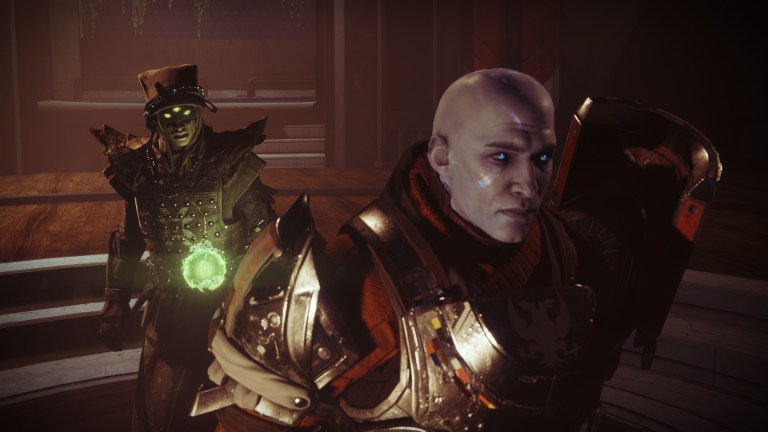Destiny 2’s Future Is Bright but There Are Still Improvements to Be Made
Destiny 2's Season of Arrivals and Beyond Light tease a bright future for the Action MMO, but there are still parts of the game Bungie needs to work on.

Dark magic from outer space and the science of an ancient evil usher in Destiny 2’s next era.
During the big Destiny 2 reveal event in June, Bungie didn’t only detail Season of Arrivals, which will lead to this fall’s Year 4 expansion, Beyond Light, but the next two years of content. Pulling on story threads lore buffs have been following for almost the entirety of Destiny’s six-year history, the upcoming content looks great.
Season of Arrivals dropped on Tuesday and it’s fun, too. The new public event uses basically the same mechanics as Gambit: enemies drop motes and you deposit them in a central location. Occasionally, enemy swarms block the bank. I love this new event. It combines the “cleaning up” satisfaction of PvE with a little bit of the chaos of a public area. So far it’s easier to complete in a small team and more effectively signposted than last season’s Seraph Towers.
The lore is also great. The loose story is that Eris Morn is trying to research the mysterious Darkness, which is headed towards Earth as living and malevolent starships (maybe). She’s aided by the mechanically inclined Gambit announcer Drifter but thwarted by Savathûn, an alien witch. The banter between Drifter and Eris is delightful: she speaks in dire portents and pessimistic poetry, while he ingratiates himself with sleazy charm. They’re the oddest of partners and very entertaining.
Overall, Bungie is making changes and adding new story elements that are paving the way for a bright new future for Destiny 2. And announcing its development roadmap through 2022 shows the studio’s commitment to continue building out this universe. With Year 4 almost here and the latest season underway, let’s take a look at what’s working for Destiny 2 and what could still use some improvement.
Destiny 2 Seasons and “FOMO”
Destiny 2’s seasons have varied wildly in terms of quality. Last season, Season of the Worthy, started strong with a compelling gameplay loop that dissolved as it got more complex. Tedious bounty-grabbing muddled an experience that was supposed to make progression feel critically important. The live event in which a gigantic starship fell to Earth summed it up pretty well: hours of waiting for one pretty cool explosion.
In the June stream, Bungie mentioned being aware of the “FOMO” problem. I’ve been on board since day one of the original Destiny, but I’m hard-pressed to explain to new players what exactly the best way to jump in now is. The season model has made that worse by making large swaths of content simply inaccessible unless you log into the game frequently and purchase each season. If you miss a month of Destiny 2, you’ll lose out on story beats, activities, and, sometimes, even gear. In the current season cycle, fans do not so much drop out of the game as are dropped. I’m glad to hear a way to change this is being considered.
Another problem that’s still to be solved is the value of chasing loot. The season model guarantees that your Light Level will reset at the turn of each season, making progression a frustrating one-step-forward two-steps-back endeavor. And while some of the new weapons on offer have been fun, armor has been very lackluster. (Season of Arrival’s Witherhoard, a grenade launcher that shoots both pools of AOE damage and bullets, is great.) This season’s Holdfast set presents a silhouette at once plain and jagged, and not particularly useful. More unique Exotic armor with the next big drop will be welcomed.
The Bungie team is feeling the growing pains of any live game in that they’re struggling with inventory management. At their worst, the seasons become menu games about collecting bounties, using them as an excuse to play the same mode over and over again to watch the numbers go up, checking them off the list, and throwing away green and blue items. Season of Arrivals adds Umbral Engrams and continues the season mechanic of new shield types, both of which sometimes simply feel like walls put up between the player and the results of their actions. If you’ve played through the recent seasons, you’ll know by now whether these are tedious enough to sour the whole gameplay loop for you or not. Low-level engrams are also being discussed in-house, Bungie said.
For the most part, the studio is re-using assets in creative ways, an effort that, mostly, comes off as charming determination. There have been many changes behind the scenes since the studio broke away from Activision, allowing Bungie to re-envision its roadmap without the publisher’s monetization and release frequency plans. Of course, that doesn’t mean the budget skyrocketed either, but Bungie projected confidence in their newest announcement by starting the run-up to the next two and a half years of expansions early.
Destiny Content Vault
In order to solve the problem of running an ever-expanding game in limited space, Bungie has introduced the Destiny Content Vault. Parts of Destiny 2 and select Destiny content will be cycled in and out of the game. This will allow Bungie to create a more cohesive universe while cutting the game’s content down to a more manageable size. It’s also a way to re-introduce the beginnings of this story without having to release a remastered version of the first game.
The Destiny Content Vault will arrive in the game on Sept. 22, the same day as the launch of the Beyond Light expansion. The Mars, Io, Titan, Mercury, and Leviathan destinations will be the first pieces of content to be cycled out of the game. Bungie explained in a blog post that the reasoning for cycling these locations and all of their missions and Strikes was simple: players just aren’t jumping into old campaigns in significant numbers and the game, which is currently 115GB to download, is growing too big and unwieldy.
According to Bungie, “Warmind’s campaign represents only 0.3% of all-time played in Season of the Worthy and yet the Warmind Expansion accounts for 5% of our total install size. This dramatic imbalance between player engagement and overall cost to maintain is found in a lot of our legacy content.”
Cycling old content out is a great solution between erasing elements of the game entirely and giving new content space. There’s a chance this new system could also become unwieldy and confusing, but in-game messages should make it clear what’s leaving and coming back. Of course, “vaulting” has the potential to remove content players really enjoy, so there’s bound to be some pushback.
Bungie softened the initial blow with the announcement that one of the first bits of Destiny content to be re-introduced for Destiny 2 will be the Vault of Glass, a beloved raid that Bungie abandoned when it moved on to a sequel. While Destiny 2‘s upcoming expansions push towards the future, the DCV approach is also a way to go back to the roots of franchise.
Destiny‘s 10-year plan doesn’t lend itself to a World of Warcraft-style “Cataclysm,” but the Pyramid ships teased for Beyond Light bring with them the suggestion of system-wide changes. The DCV isn’t an initiative driven by the story but the size of the game, and we’ll have to wait and see whether the strength of ongoing content balances out the losses.
Beyond Light
Beyond Light will attempt to push the game forward in a big way. Of note is the expansion’s story itself, which will see the return of the mysterious Exo Stranger and the addition of a new subclass of Darkness-affiliated powers.
The former strikes me as a strong expression of confidence from Bungie. The Exo Stranger was often memed in order to jest at Destiny’s obscure story, and now that she’s back five years of world-building later, it’s a chance to both deepen a character built almost entirely on mystery and capture a sense of nostalgia that Destiny 2 has finally earned. (Rise of Iron tried to be nostalgic too soon in comparison.)
But what about those Darkness powers? What do they mean for Destiny 2 going forward? I’ve been wary of them since Forsaken, which I liked overall, tried to moralize at the player in a story without choice. Balancing light RPG elements with mechanical choice can be tricky: I don’t want to be forced to use the Darkness, nor do I want to miss out on powerful abilities and new types of gameplay because I imagine my character to be a stickler for the Traveler.
The Exo Stranger’s involvement might solve that problem. Then, the story will present an ally giving you access to Darkness that isn’t actually demonstrably harmful. It’s not a moral statement, it’s just a different aspect of this underlying cosmology, some of which is harmful and needs to be destroyed.
2021 and Beyond
Speaking of Darkness, next year looks spooky as the story returns to the Hive with The Witch Queen. I’ve written before about how the Witch-Queen’s involvement suggests a lot of new types of puzzles and ways to engage with the game. There’s plenty to speculate on, especially as the Witch-Queen is set up in Season of Arrivals as perhaps an ally to neither the Light nor the Darkness.
And in 2022 comes Lightfall, which features key art of the ominous Pyramid ships associated with the Darkness. Releasing this road map so early was a smart hype-building choice. Players can also now make informed decisions about what parts of Destiny 2 they want to budget for and invest their time on.
The seasons have at times felt like what they are: assets and locations reused in slightly new ways to keep a ravenous fanbase playing between big content drops. I’m still mostly pleased with the lore bits the seasons have added, plus the incentive to keep playing with my friends. And knowing truly new content is coming for the next two years will motivate me to keep playing for seasons to come.
